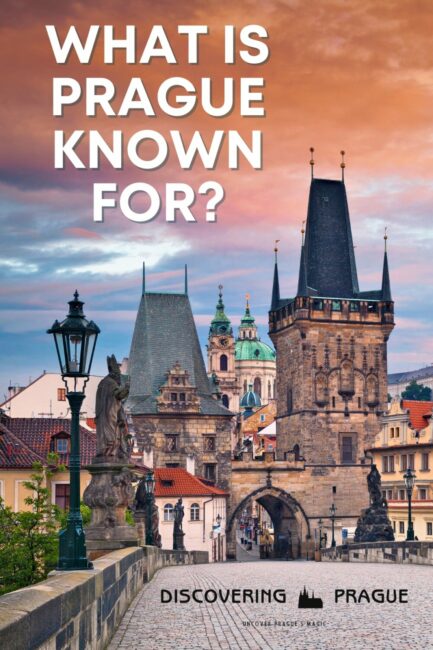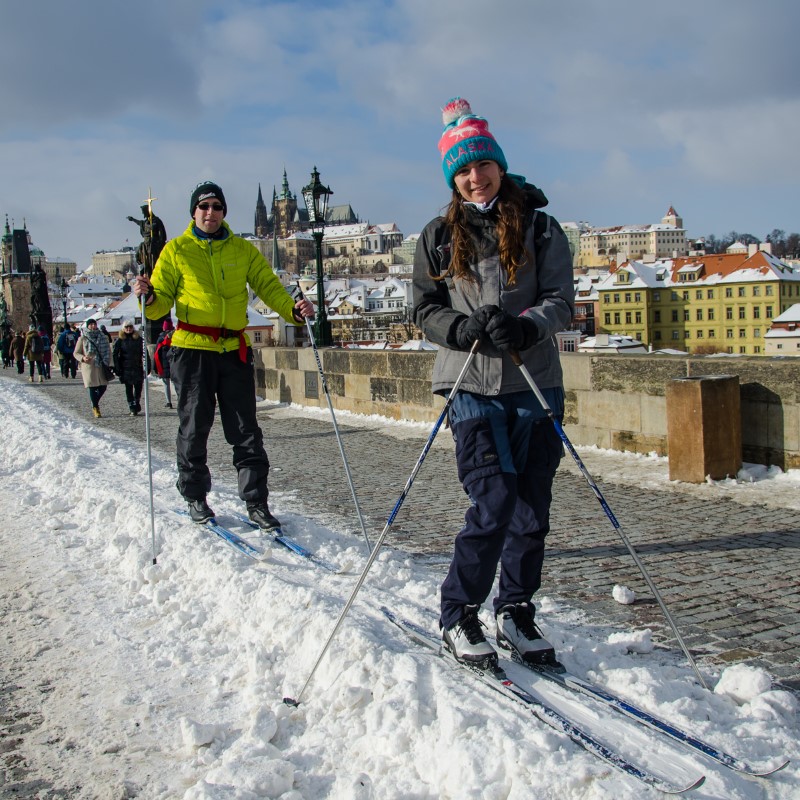
Written by local experts Adriana & Matěj
Adriana and Matěj Halouskovi are travel bloggers behind the successful blog Czech the World.
Matěj was born in Prague and has lived here his entire life and Adriana moved here 6 years ago.
We have traveled to more than 60 countries, but if we could tell you what place we know the most, it is our city.
Prague, the heart of Europe, is a city that never fails to amaze its visitors with its breathtaking beauty, rich history, and vibrant cultural scene. While the city is renowned for its stunning architecture and historical landmarks, it offers much more beyond the surface.
In this article, we delve into unique aspects that make Prague stand out. As locals we’ve crafted an article unlike any other you’ll find, offering insights and highlights that go beyond the usual tourist paths. What is Prague known for?
1) Beer: A National Treasure
Prague’s beer culture is deeply ingrained in its history, with brewing traditions dating back to the 10th century. The city is home to some of the oldest breweries in the world, including the Břevnov Monastery Brewery, established in 993 AD.
No visit to Prague is complete without experiencing its pubs and beer gardens, which serve as social hubs for locals and tourists alike. The city boasts the highest pub per capita ratio in the world, offering a diverse range of venues from historic taverns to modern craft beer bars.
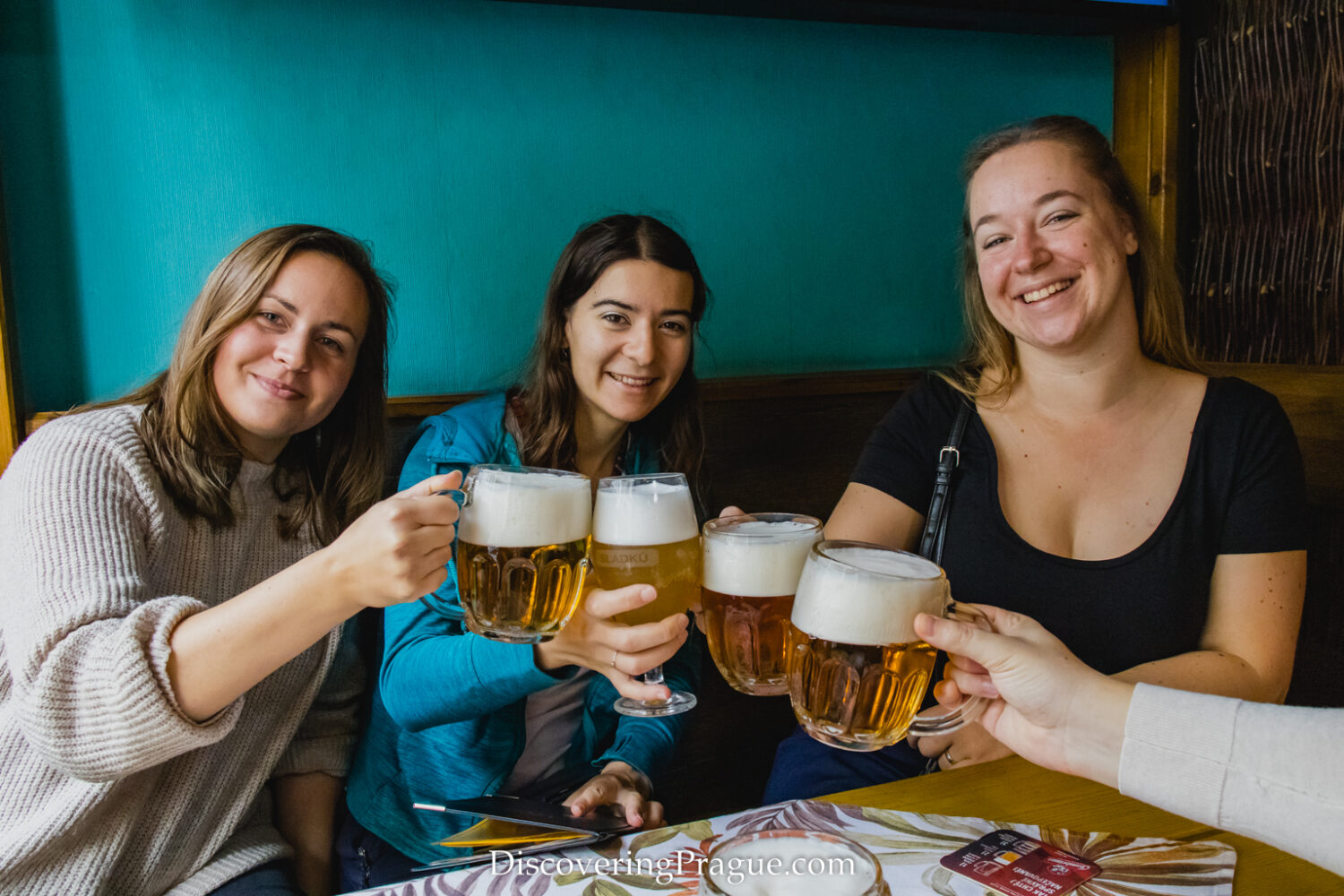
2) Beautiful Women
Czech women are said to be beautiful, and you can see for yourself. Even our biggest breweries are convinced of this:

3) Prague Castle – Largest Castle Complex in the world
According to the Guinness Book of Records, Prague Castle is the largest castle complex in the world. Its area covers 70,000 square meters! The castle complex includes St. Vitus Cathedral, which is the largest church in the country, as well as many other palaces, religious structures, and buildings. This extensive collection of buildings was built over eleven centuries in various architectural styles – from the Romanesque style of the 10th century to the latest high-tech orangery by architect Eva Jiřičná in the Royal Garden.
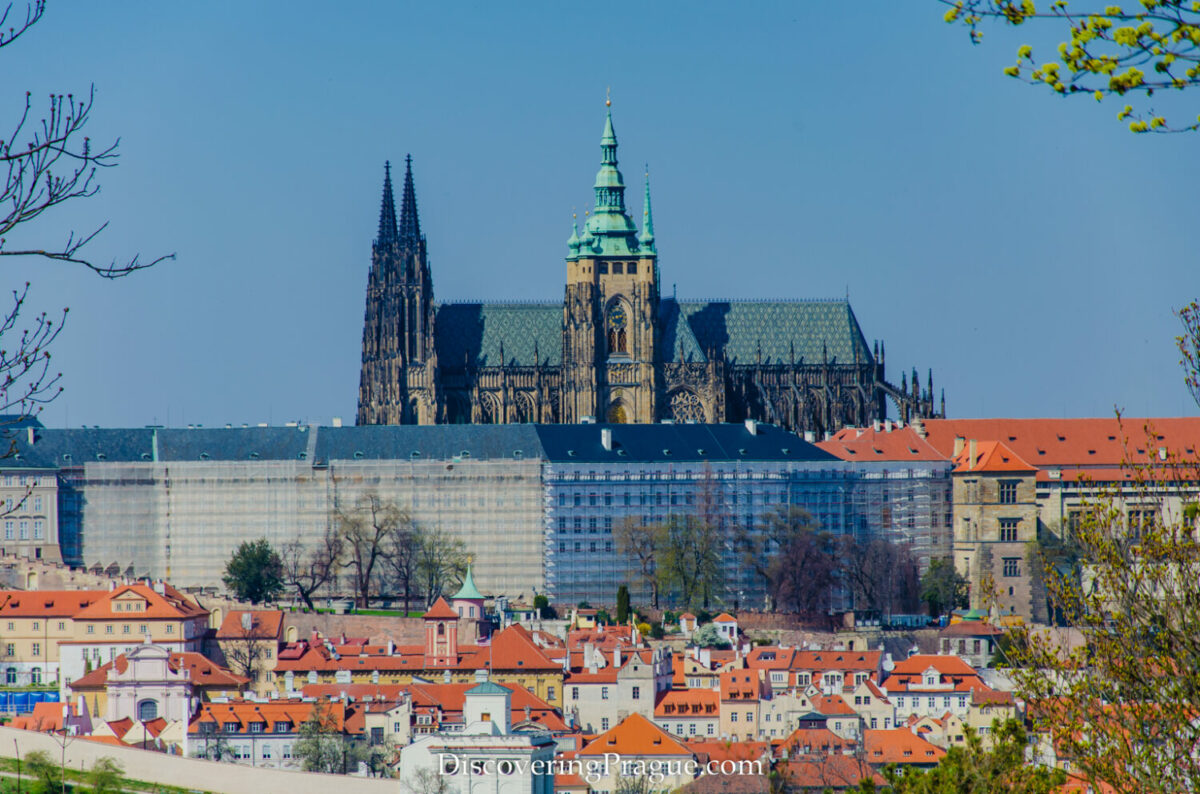
4) Birthplace of the Word “Robot”
Prague, the capital of the Czech Republic, is not only a hub for scientific and technological innovation but also the birthplace of the word “robot.” This contribution to the global vocabulary comes from the renowned Czech writer Karel Čapek, who introduced the term in his play “R.U.R.” (Rossum’s Universal Robots) in 1920.
The play, premiered in Prague, explores themes of technology, humanity, and the potential consequences of artificial intelligence, making Čapek a visionary of his time. The word “robot” itself, derived from the Czech word “robota” meaning forced labor or drudgery, has become a fundamental part of the lexicon in science and popular culture, illustrating the profound impact of Czech literature and thought on the world.

5) The oldest still operating astronomical clock in the world
Dominating the Old Town Hall’s facade is the Astronomical Clock, or Orloj (in Czech), a marvel of medieval engineering. Installed in 1410, it’s not only a significant timekeeper but also an artistic and scientific masterpiece, drawing crowds every hour with its procession of apostles and other moving sculptures.
The Astronomical Clock is renowned for its sophisticated mechanism and detailed craftsmanship. Beyond its hourly show, the clock displays astronomical information, such as the positions of the sun, moon, and constellations, serving as a bridge between the past and present understanding of the cosmos. It remains one of the city’s most visited attractions, embodying the spirit of innovation and continuity.

6) Otto Wichterle: The Visionary Behind Contact Lenses
While not directly related to Prague’s tourist attractions, it’s worth noting the Czech Republic’s contributions to the field of optics, including advancements in contact lens technology.
Otto Wichterle’s work in Prague laid the foundation for the invention of soft contact lenses, a breakthrough that has transformed the lives of millions of people worldwide. His pioneering research and experiments conducted in the early 1960s led to the development of hydrogel contact lenses, which offered a more comfortable and practical alternative to the hard lenses that were available at the time.
Today, Otto Wichterle is celebrated not only in Prague but around the world as the father of soft contact lenses. His work exemplifies the city’s rich history of scientific achievement and its role in fostering innovations that have a profound impact on people’s lives.
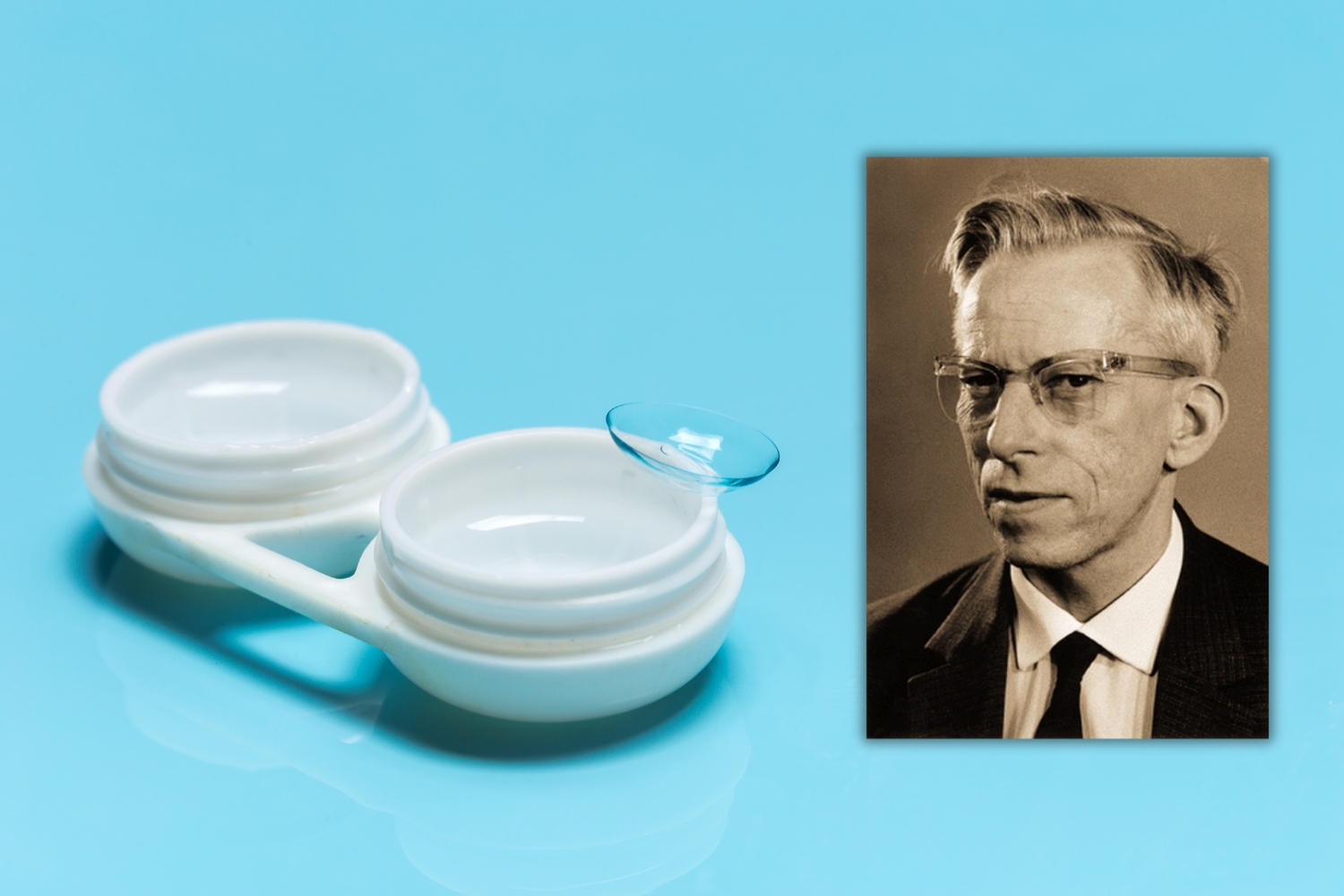
7) The Capital of Pleasure
Despite only 10.5 million inhabitants (about 0.14% of the world population), the Czech Republic is the third nation in the world in the number of po**n stars behind only the United States and Russia. In fact, 12.88% of the world total of adult film stars comes from Bohemia and Moravia.

8) Franz Kafka: Prague’s Literary Prodigy
Franz Kafka, one of the most influential writers of the 20th century, drew heavily from his experiences in Prague, which permeate his works. The city’s labyrinthine streets and enigmatic atmosphere are mirrored in Kafka’s complex narratives and existential themes.
Prague honors Kafka’s legacy with the Kafka Museum and numerous statues, including the strikingly surreal sculpture by Jaroslav Róna in the Jewish Quarter. These sites have become pilgrimage spots for literature enthusiasts, offering insight into Kafka’s life and the profound impact of his hometown on his writing.
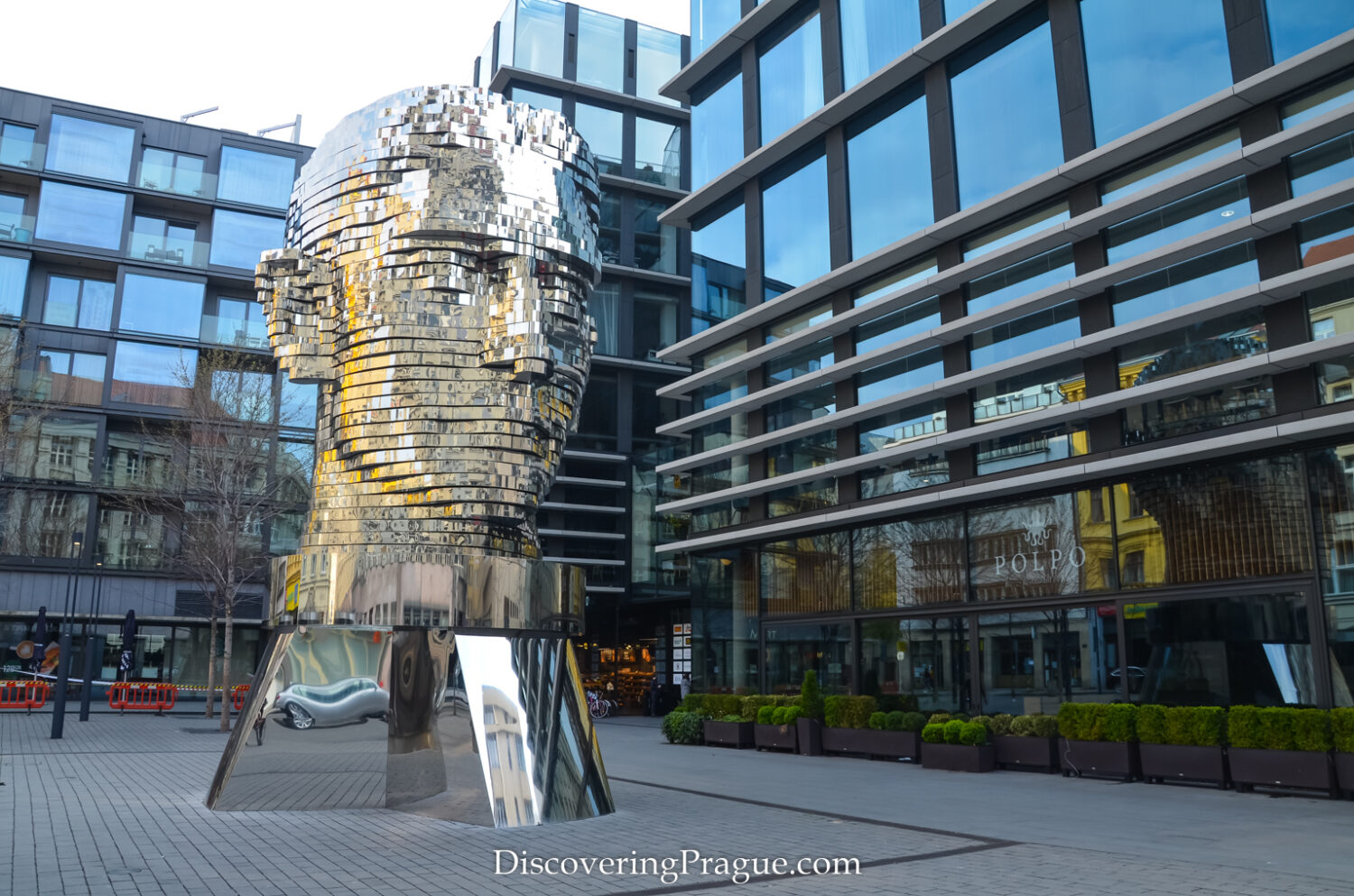
9) The term “defenestration” originated in Prague.
Defenestration refers to the act of throwing someone or something out of a window. The term is derived from the Latin word “fenestra,” meaning “window” and it was coined around the time of the Defenestration of Prague in 1618, which played a significant role in sparking the Thirty Years’ War.
At that time, two Catholic officials were thrown out of a window of Prague Castle by Protestant nobles (they both survived the 20-metre (68-foot) fall out of the window). This was done in “good Bohemian style”, referring to the defenestration which had occurred in Prague’s New Town Hall in 1419.
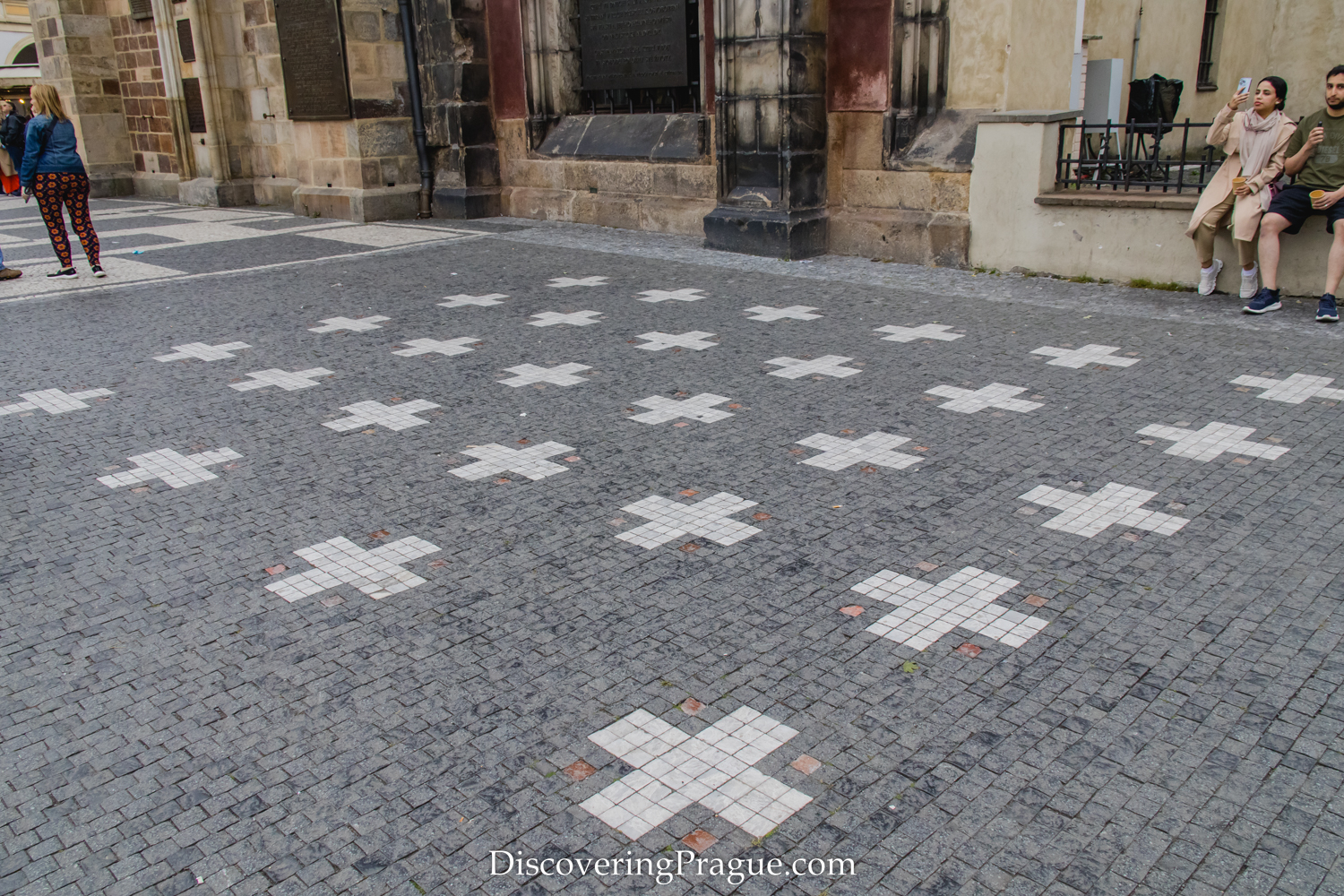
10) Christmas Markets
Prague’s Christmas markets are not only a beloved tradition among locals and visitors alike but have also garnered international acclaim, frequently being recognized as some of the most beautiful Christmas markets in the world. These festive markets transform Prague into a winter wonderland, offering a unique blend of holiday cheer, traditional Czech culture, and enchanting atmospheres that captivate people from all corners of the globe.
Read more here: Ultimate Guide to Prague Christmas Markets
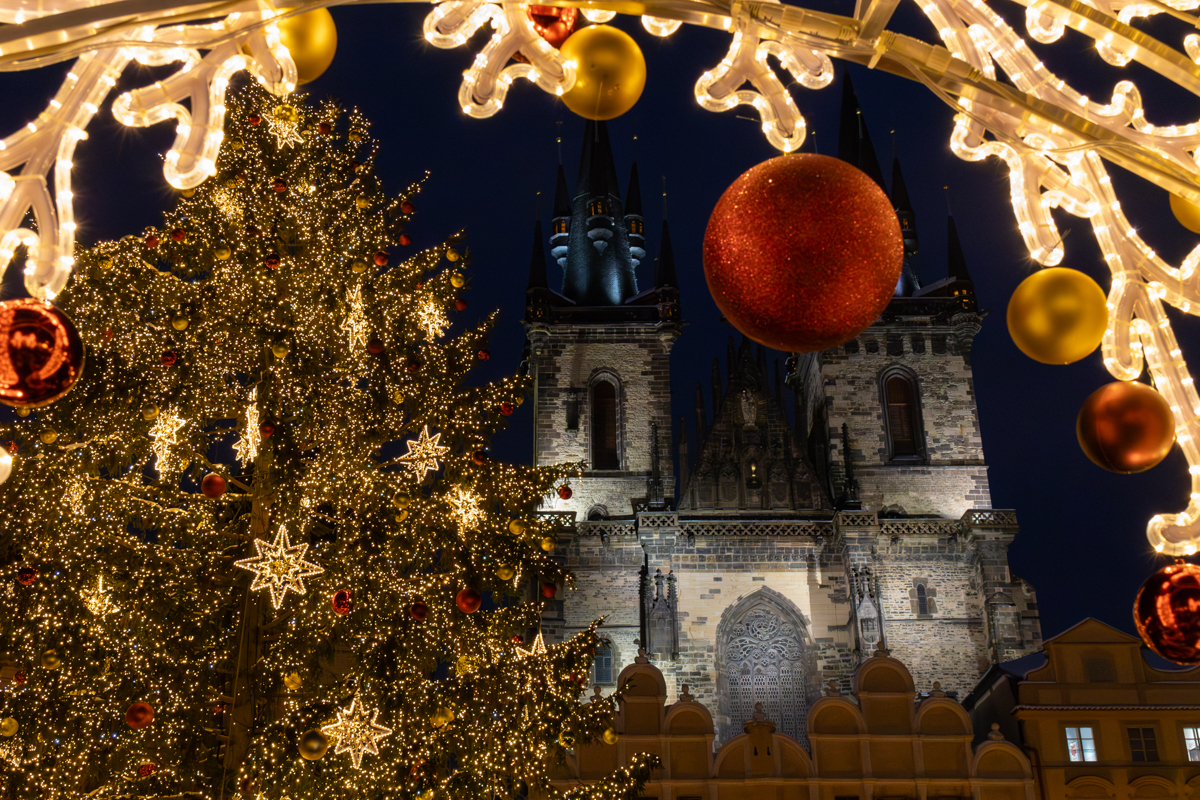
11) Prague boasts the highest pub per capita ratio in the world!
Prague takes the crown with its impressive record of having the highest pub per capita ratio in the world! Its pubs reflect its rich history and brewing traditions, ranging from historic breweries to trendy craft beer bars. Exploring this diverse scene provides an opportunity to immerse oneself in local customs and savor unique flavors. Beyond quenching thirst, they serve as social hubs where people come together.

12) Charles Bridge – Karlův most
Charles Bridge, or Karlův Most, stands as a testament to Gothic architecture’s enduring beauty. Commissioned by King Charles IV in the 14th century, this historic bridge spans the Vltava River, connecting Prague’s Old Town with the Lesser Town (Malá Strana). Its construction is a marvel of medieval engineering, adorned with 30 statues and statuaries, making it a captivating sight for visitors.
Beyond its architectural significance, Charles Bridge represents the city’s historical and cultural continuity. It has withstood numerous floods, wars, and historical upheavals, serving as a silent witness to Prague’s evolving story. Walking across the bridge offers a journey through time, surrounded by the panoramic views of Prague Castle and the city’s picturesque skyline.
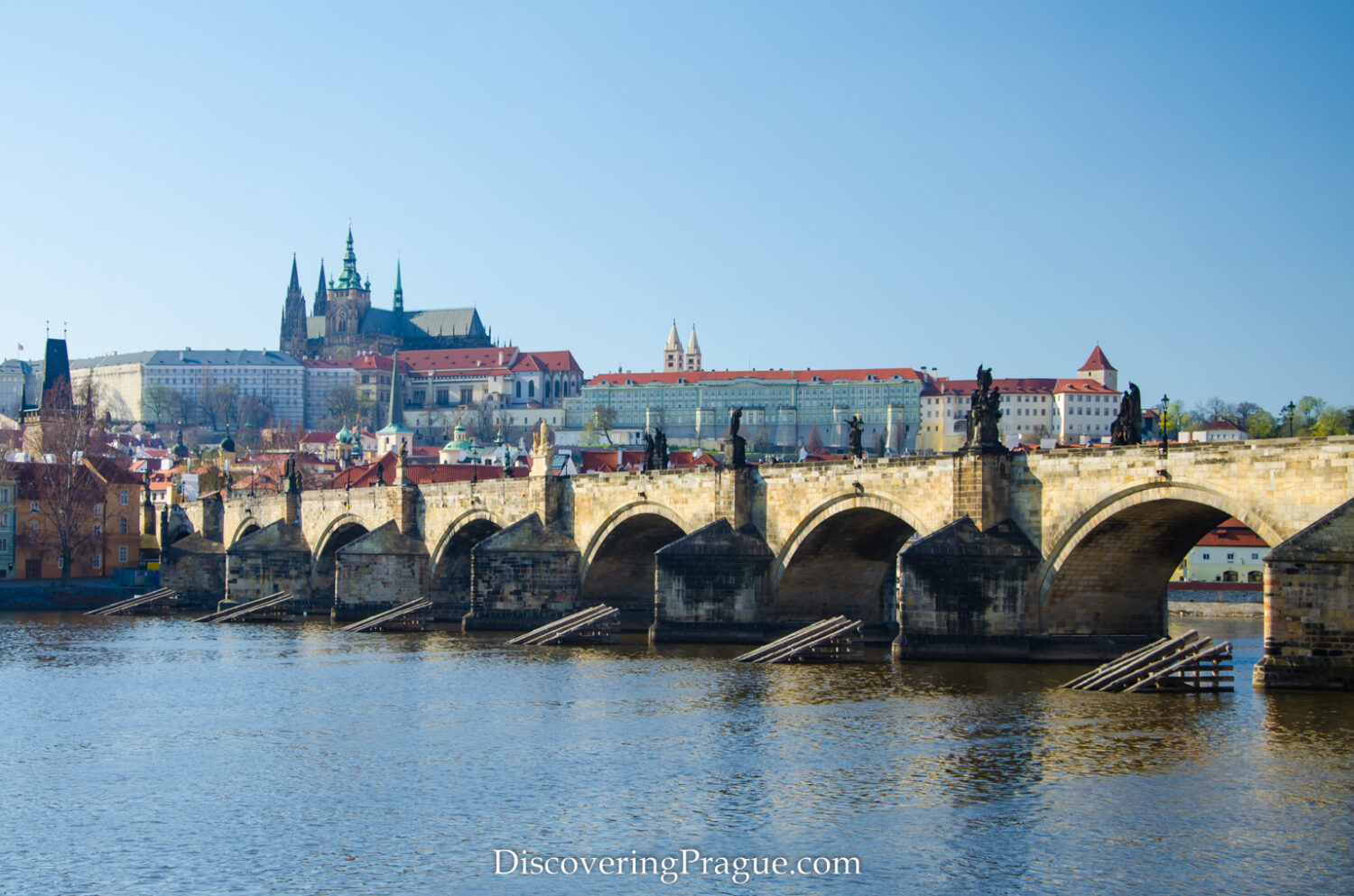
13) Dancing House (Tančící dům)
The Dancing House, also known as the “Ginger and Fred” is a modern architectural marvel designed by architects Vlado Milunić and Frank Gehry, resembling a pair of dancers.
Completed in 1996, the Dancing House’s design was inspired by the famous dance duo Fred Astaire and Ginger Rogers. The building stands out as a contrast to the historic architecture that dominates the city. You can find there a gallery, offices, a restaurant, and even a rooftop terrace offering panoramic views of the city. It is located at Jiráskovo nám. 1981/6.
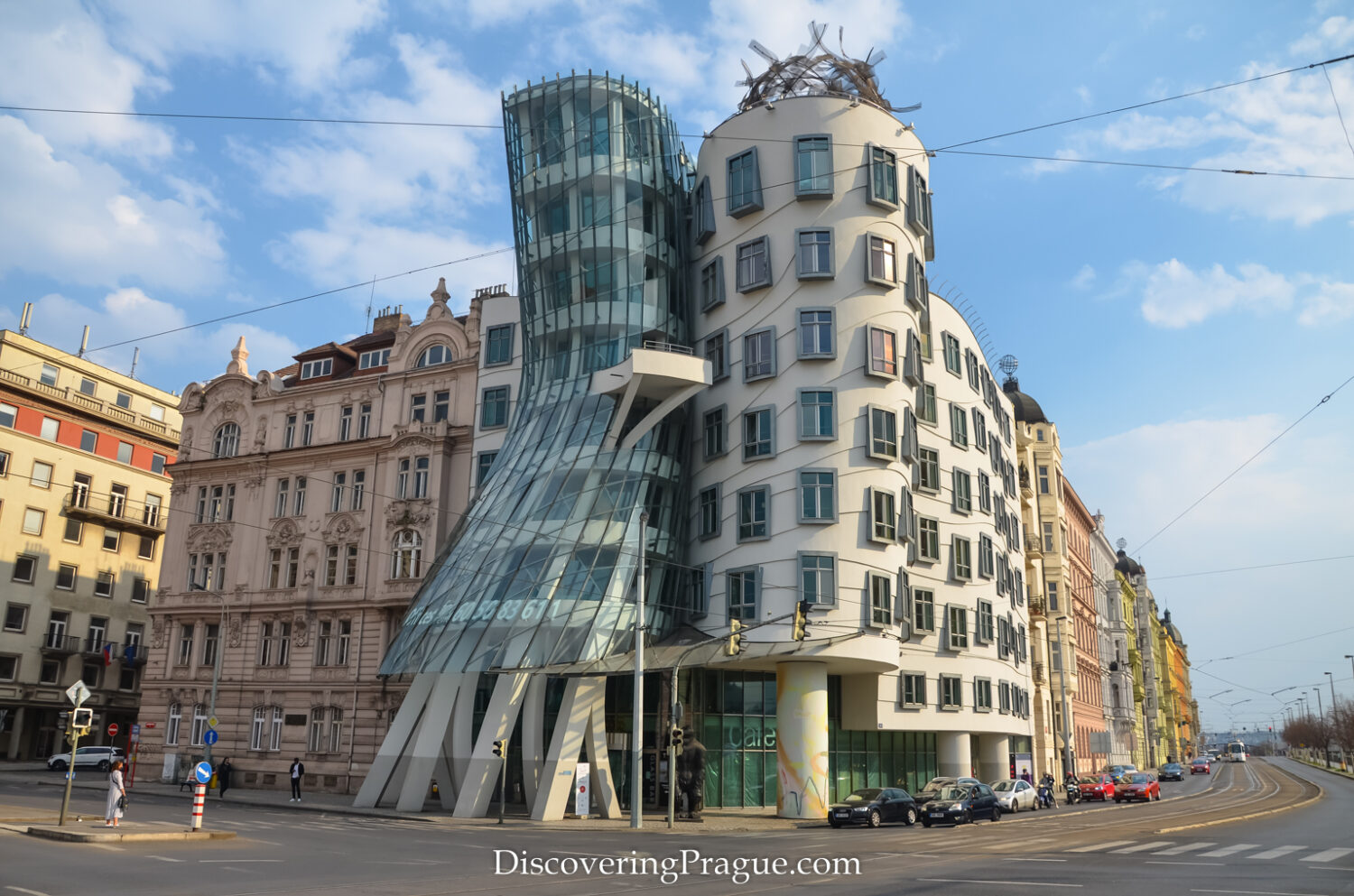
14) Capital of a Country with the Densest Railway Network in the World
Prague is not only the capital of the Czech Republic but also the central hub of one of the densest railway networks in the world. This extensive network facilitates easy and efficient travel within the country and to neighboring European nations, making Prague a key gateway for tourists exploring Central Europe.
The city’s railway stations, including the historic Praha hlavní nádraží (Prague Main Railway Station), are architectural wonders in themselves, blending historical charm with modern efficiency.

15) John Lennon Wall: A Canvas of Hope and Rebellion
The Lennon Wall holds a significant place in the city’s history as an enduring symbol of peace and freedom. Since 1980 it gained international attention when it became adorned with vibrant graffiti and lyrics inspired by John Lennon, a renowned advocate for peace. Despite attempts by the authorities to suppress these expressions, the wall became an emblematic icon representing resilience against oppression and yearning for liberty throughout Prague’s turbulent past.
What makes the John Lennon Wall unique is its dynamic nature; it is continuously changing, with new messages and artworks added regularly. This aspect makes it a living piece of art and a historical record of societal and political sentiments over the years, reflecting the collective consciousness of generations.
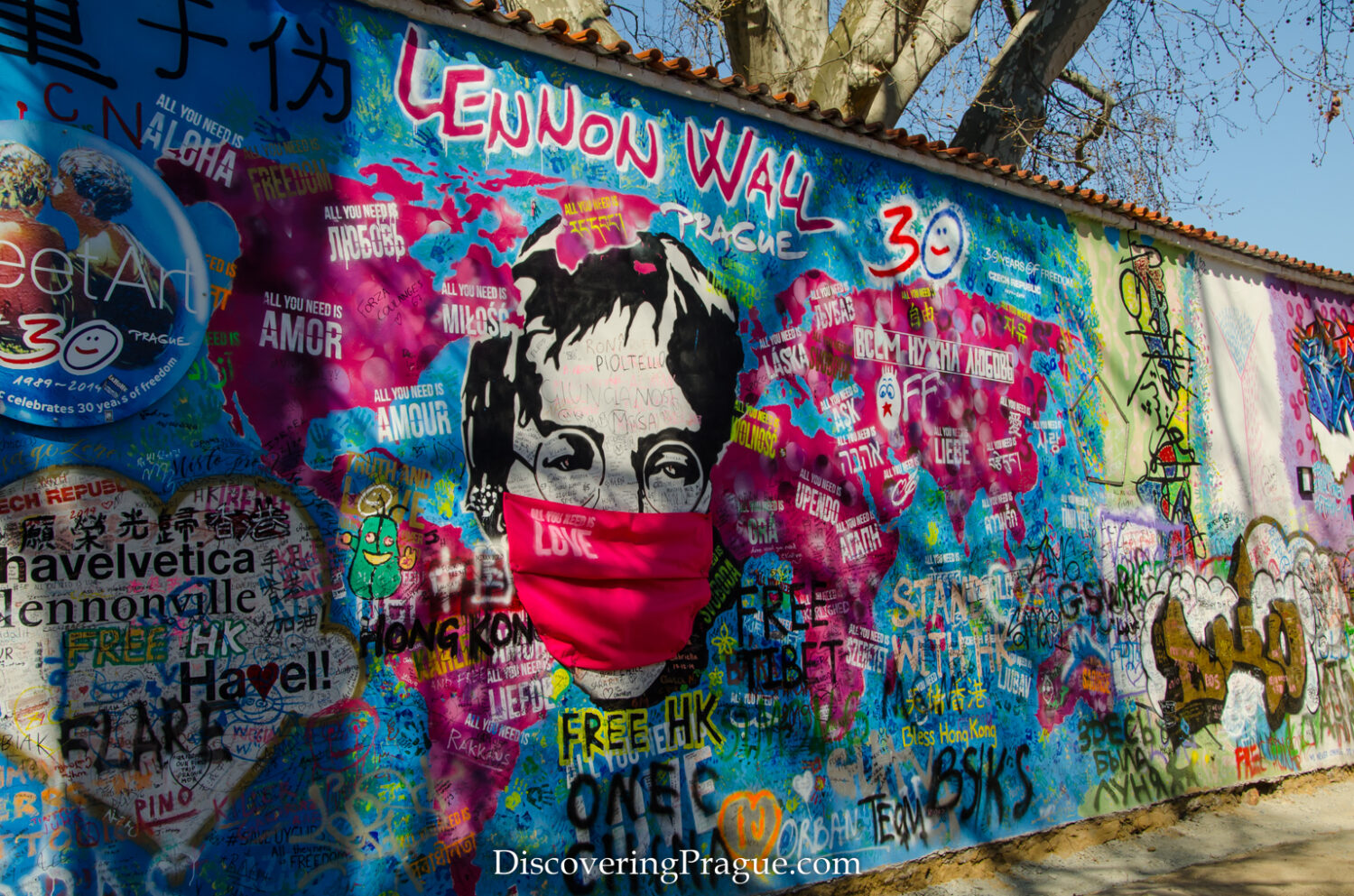
16) Capital of leading country of Electron Microscopy Innovation
The Czech Republic is renowned for its contributions to the development and manufacturing of world-class electron microscopes. One-third of the total world production comes from here. These sophisticated instruments are crucial for groundbreaking research in materials science, biology, and nanotechnology, allowing scientists to visualize the structure of materials at the atomic level. This underlines the nation’s role in contributing to scientific and medical research worldwide.

17) Vyšehrad: A Seat of Ancient Kings
Vyšehrad is a historic fort located on a hill overlooking the Vltava River. According to legend, Vyšehrad was the first seat of Czech princes and the mythical founder of the Czech nation, Princess Libuše.
Today, it offers a serene escape from the city’s hustle and bustle, with lush gardens, stunning views, and significant architectural landmarks, including the Basilica of St Peter and St Paul and the Vyšehrad Cemetery, where many notable Czechs are buried.

18) Prague’s Electrifying Nightlife
As the sun sets, Prague transforms into a bustling hub of nightlife, offering a variety of entertainment options for every taste. From intimate jazz clubs and traditional beer halls to pulsating nightclubs and sophisticated cocktail bars, the city caters to both the laid-back drinker and the night owl.
Prague’s club scene is a melting pot of musical styles, ranging from electronic and house to rock and jazz. Venues like Roxy, Cross Club, and Karlovy Lázně (Largest nightclub in Central Europe) showcase local and international DJs, offering unforgettable nights out in the heart of the city.

19) Charles IV (Karel IV.)
King Charles IV, known as Karel IV in Czech, was not only a Czech king but also a Holy Roman Emperor and is considered one of the most esteemed leaders in Czech history. His reign in the 14th century was marked by significant cultural and educational reforms, including the founding of Charles University, the first university in Central Europe. His vision and policies laid the groundwork for Prague’s development into a major European capital.

20) Jan Ámos Komenský (Jan Amos Comenius): The Teacher of Nations
Jan Amos Comenius, known as Jan Ámos Komenský in Czech, was a Czech philosopher, pedagogue, and theologian, often hailed as the “Teacher of Nations.” His innovative educational methods and advocacy for universal education made him a pioneering figure in modern pedagogy. Prague celebrates his contributions to education and his progressive ideals, which have influenced educational systems worldwide.
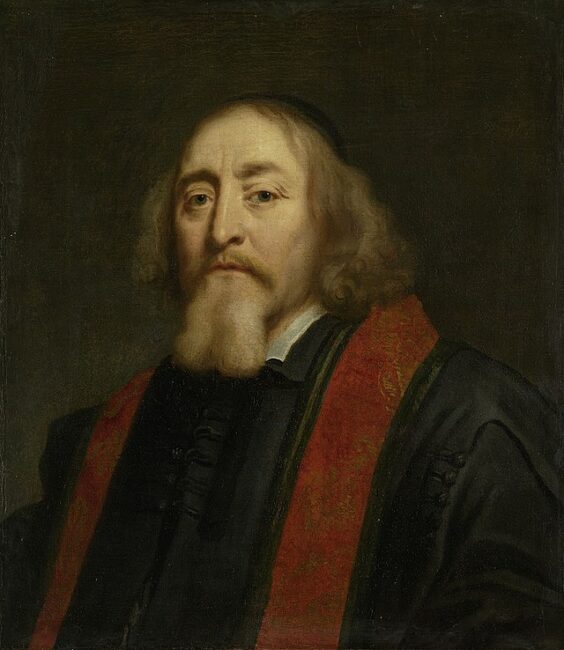
21) Jewish Quarter (Židovská čtvrť)
The Jewish Quarter, known as Josefov, is located in the heart of Prague and is one of the most significant Jewish historical sites in Europe. This area is a mosaic of history, culture, and tragedy, with its origins tracing back to the 13th century. The Old Jewish Cemetery is one of the oldest of its kind in Europe.
Despite the adversities faced by the Jewish community over the centuries, including the devastations of the Holocaust, the Jewish Quarter stands as a testament to resilience and the preservation of memory. The Quarter not only offers insight into the historical experiences of Prague’s Jewish population but also celebrates the vibrant cultural contributions they have made to the city.
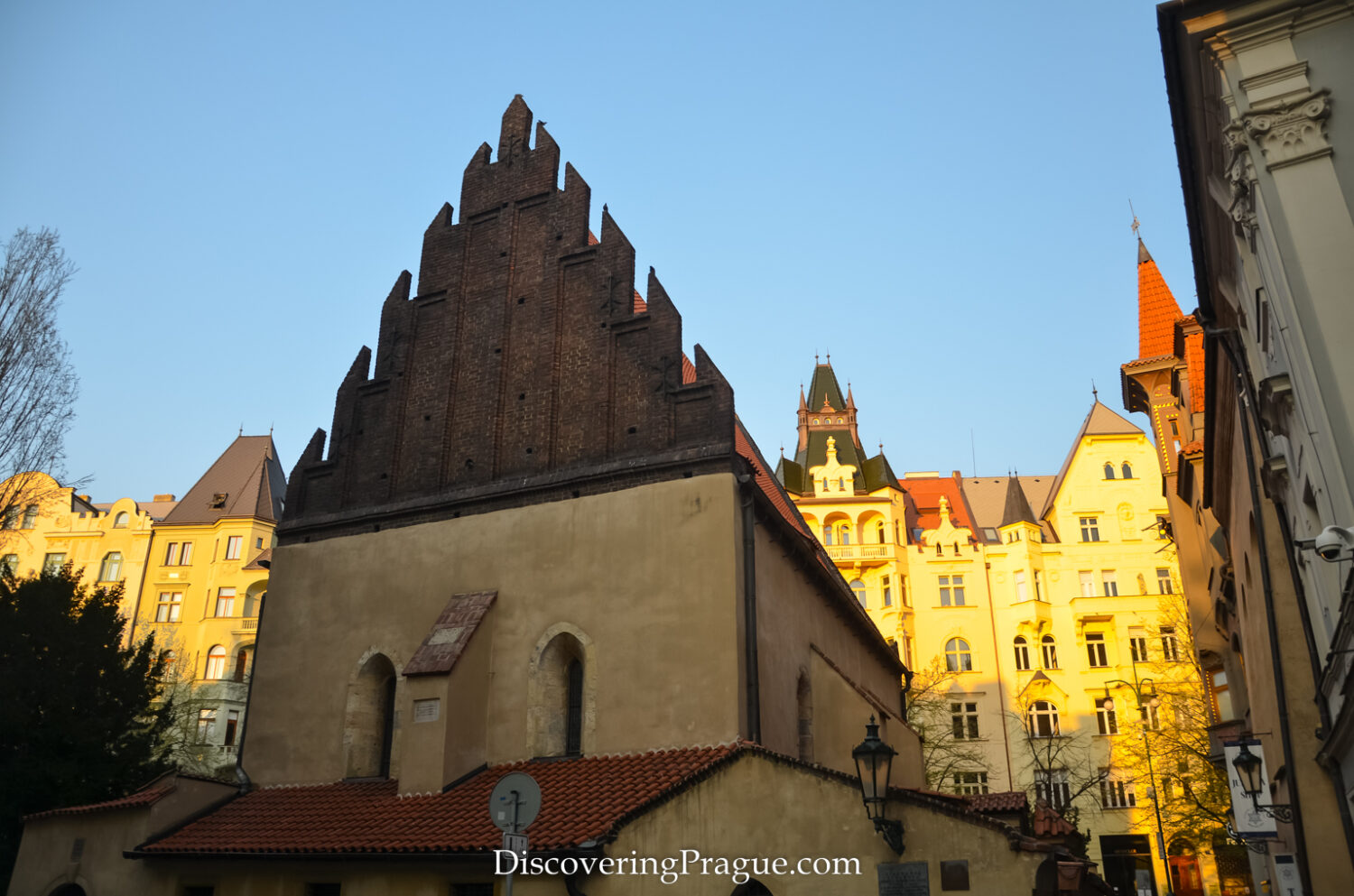
22) Capital of the 4th Most Atheistic Country in the world
The Czech Republic is often cited as one of the most atheistic countries in the world, with a significant portion of its population identifying as non-religious. According the server World Population Review, we are no. 4.
You might ask why? The biggest influence has the communist regime (1948 – 1989). During this era, many clergy members were persecuted, and some were killed or imprisoned in fabricated trials. These actions were part of a broader effort to suppress religious practice and reduce the influence of churches in society. The impact of these policies was profound and long-lasting leading to decline in religious practice…

23) Old Town Square
Old Town Square, the historic center of Prague, is a spectacular showcase of the city’s architectural diversity. Surrounded by Gothic, Renaissance, Baroque, and Rococo buildings, the square is a living textbook of architectural history. It’s a place where time seems to stand still, offering a journey through centuries with every step.
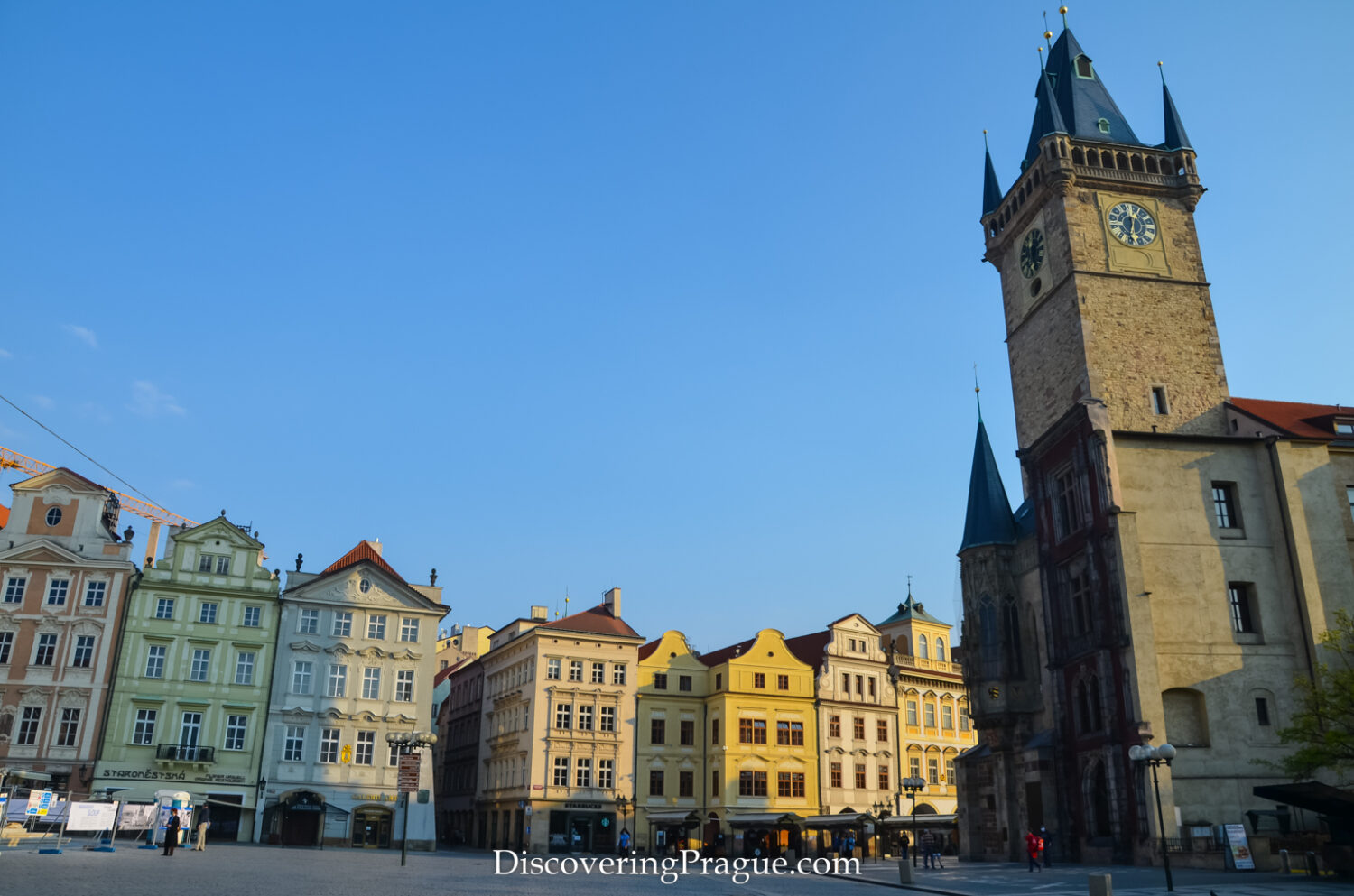
24) David Černý Sculptures: Prague’s Art with Attitude
David Černý’s sculptures are scattered throughout Prague, offering a modern counterpoint to the city’s historical backdrop. Known for their provocative, often humorous commentary on social, political, and cultural issues, Černý’s works invite viewers to reflect, discuss, and sometimes simply marvel at their boldness and creativity.
From the kinetic statue of Franz Kafka to the babies climbing the Žižkov Television Tower, seeking out Černý’s sculptures can serve as a unique way to explore the city.
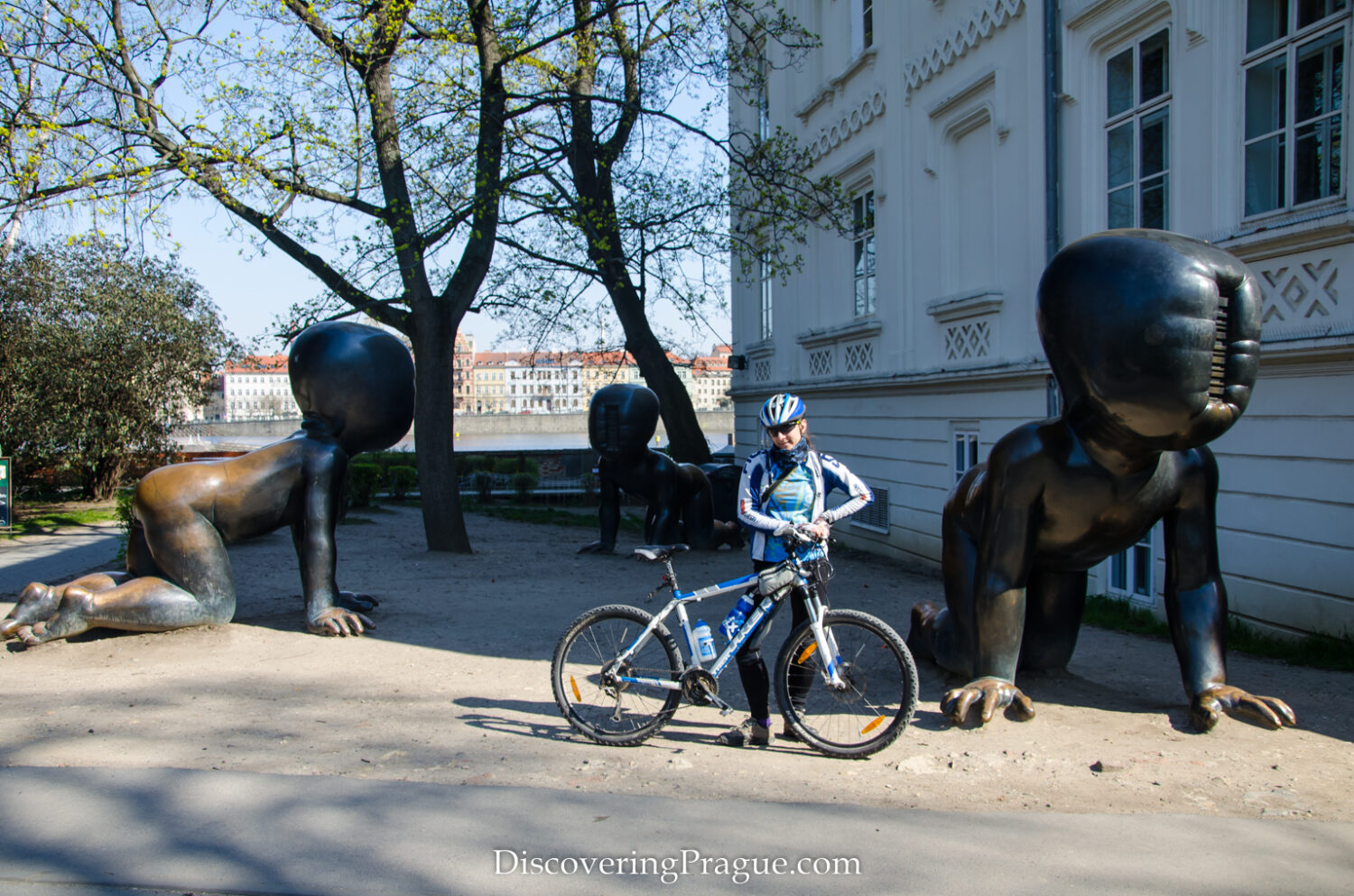
25) Paternosters
Paternosters, the old-fashioned continuously moving elevators found in some of Prague’s public buildings, offer a nostalgic glimpse into the past. These elevators, rare and intriguing, provide a unique experience for those curious about mechanical innovations of the past century, embodying a sense of timelessness amidst the city’s modern pace.
Though their practical use has diminished over time, the existing paternosters in Prague are preserved as cultural artifacts, beloved for their charm and the quirky experience they offer. They symbolize Prague’s dedication to preserving its diverse heritage, balancing innovation with a deep respect for tradition.
26) St. Vitus Cathedral: A Gothic masterpiece
St. Vitus Cathedral, located within the Prague Castle complex, is the largest and most important church in the Czech Republic. This Gothic architectural masterpiece is not only a place of worship but also the burial site of several patron saints, sovereigns, and archbishops, making it a significant spiritual symbol of the Czech state.
The cathedral’s construction spanned over six centuries, resulting in a breathtaking blend of Gothic, Renaissance, and Baroque elements. Its stained glass windows, notably the Mucha window, and the intricate details of its chapels and towers, offer a profound insight into the artistic and spiritual endeavors of the Czech people.

27) Signal Festival: A Fusion of Art, Light, and Technology
Signal Festival transforms Prague into an outdoor gallery of light art and emerging technologies every year. Artists from around the globe converge on the city, using its buildings and public spaces as canvases for spectacular light installations, interactive exhibits, and immersive experiences.
The festival not only beautifies the city but also stimulates public engagement with contemporary art forms, bridging the gap between the public and the avant-garde.
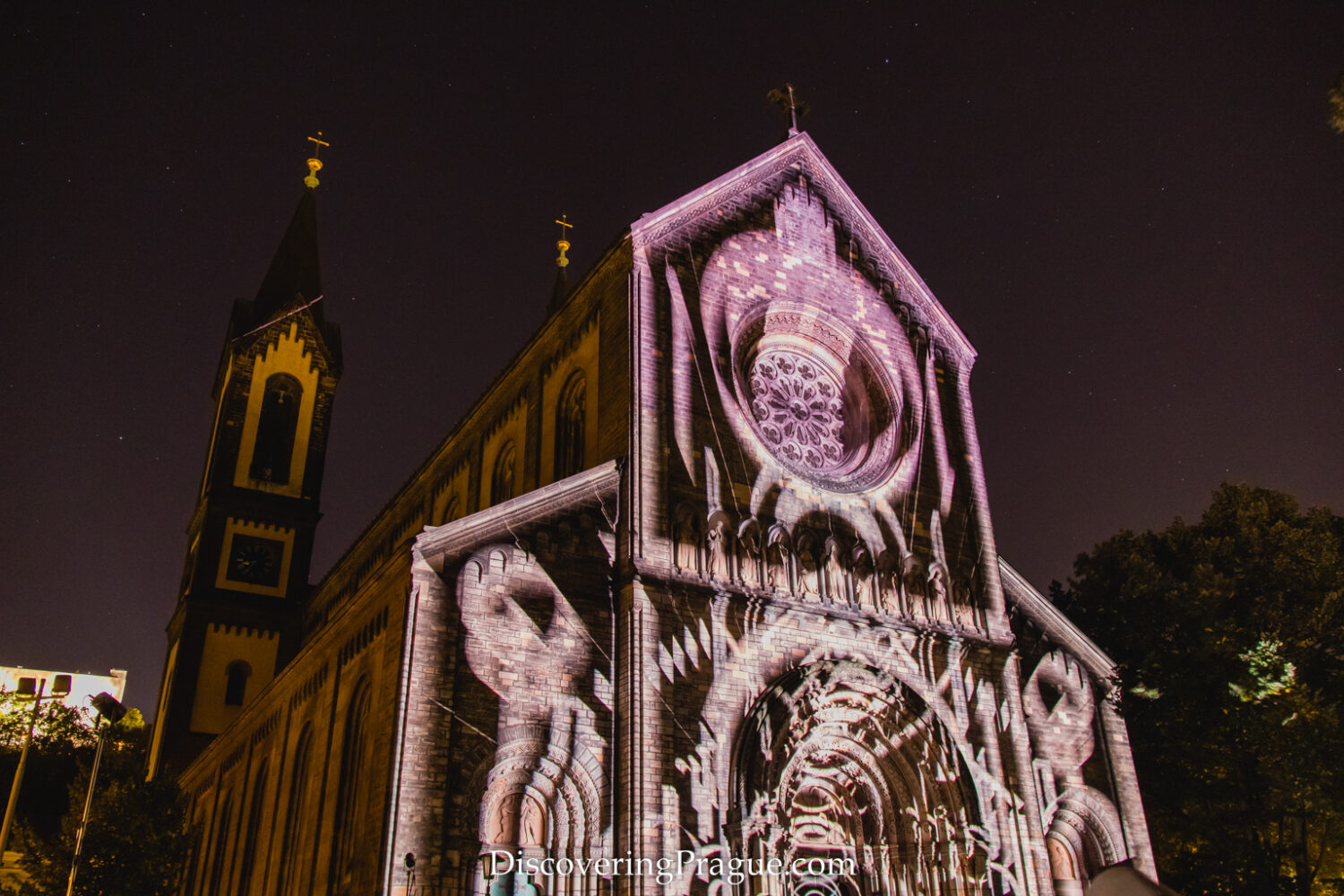
28) Petřín Hill and Lookout Tower
Petřín Hill, crowned with its distinctive Lookout Tower, offers a serene escape from the city’s bustling streets. The Petřín Lookout Tower was constructed as a free replica of the Eiffel Tower during the Jubilee Exhibition in 1891 (at a ratio of 1:5 to the original Parisian tower). It stands at a height of 58,7 meters and features 299 steps leading to its top, which sits at the same elevation as the actual Eiffel Tower.
The hill and its surroundings, filled with lush gardens, meandering paths, and romantic spots, have become a symbol of leisure and love in the city.

29) Prague Spring International Music Festival
The Prague Spring International Music Festival is one of the most prestigious classical music events in the world, attracting top performers, conductors, and orchestras. Held annually in May, this festival offers a rich program of concerts, featuring both traditional classical pieces and contemporary compositions.
Established in 1946, the festival has become a highlight of Prague’s cultural calendar, continuing the city’s tradition of musical excellence and reinforcing its status as a global center for classical music. It provides a platform for cultural exchange and showcases the timeless appeal of classical music.
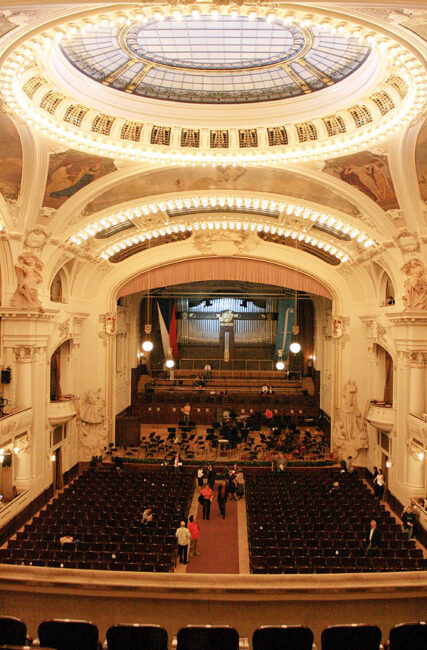
30) Tycho de Brahe – the Star of Prague
The Danish astronomer Tycho Brahe made significant contributions to astronomy during his time in Prague. Invited by Emperor Rudolf II, he spent the last years of his life in the city, where he conducted some of his most important observations. Brahe’s work in Prague laid the groundwork for future astronomical discoveries, highlighting the city’s role as a center for scientific inquiry in the Renaissance.
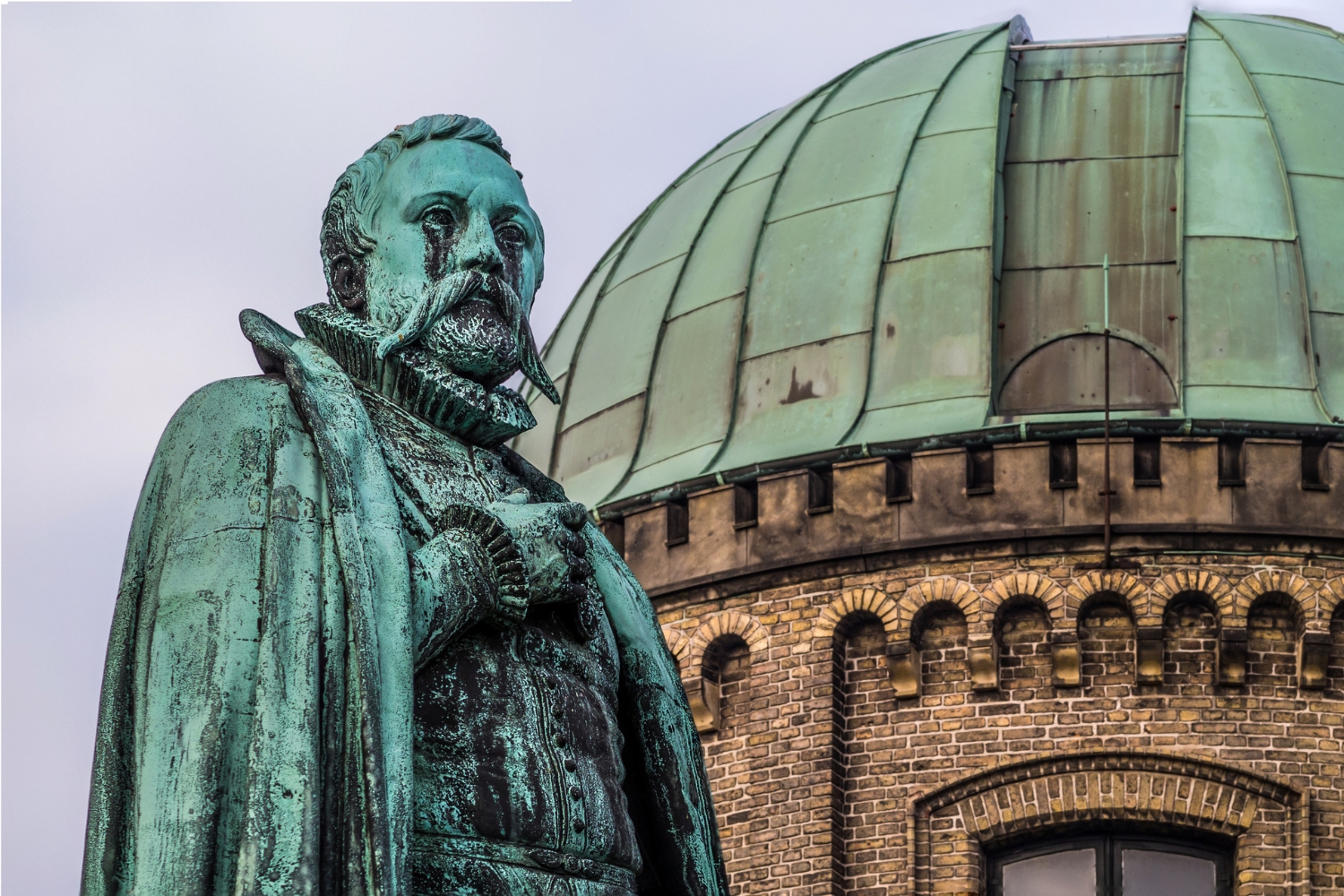
31) National Theatre A Testament to Resilience and Unity
The National Theatre in Prague is a magnificent neo-Renaissance building, serving as a symbol of Czech national identity and cultural heritage. It is a testament to the nation’s commitment to preserving and promoting the arts, offering a rich program of opera, ballet, and drama.
It stands as a symbol of Czech resilience and national pride, particularly highlighted by its recovery from a devastating fire in 1881. This tragic event mobilized widespread public support, leading to an impressive display of national solidarity.
Citizens from across the Czech lands contributed to the theatre’s reconstruction, embodying the motto “Národ sobě” (“The Nation to Itself“). The theatre was swiftly rebuilt and reopened in 1883, showcasing the collective determination of the Czech people to preserve and celebrate their cultural heritage.
Strahov Monastery and Library: A historic monastery with one of the most beautiful libraries in the world.

32) Vltava River Cruises
This is something that become very popular among tourists. A cruise on the Vltava River offers a unique vantage point from which to appreciate Prague’s historical architecture and scenic beauty. These cruises provide picturesque views of the city’s major landmarks, including Prague Castle, Charles Bridge, and the National Theatre, all while gliding along the tranquil waters of the Vltava.
From local point of view, I can recommend paddleboats, that you can hire at Slovanský ostrov.

33) Golden Lane: A Colorful Glimpse into History
Golden Lane, known for its vibrant and colorful facades, is a charming row of historic houses nestled within the Prague Castle complex. Originally built in the 16th century to house castle guards, it later became home to artists and craftsmen. Today, it stands as a picturesque reminder of the past, each house telling its own story.
Touring Golden Lane offers a glimpse into the daily lives of its former residents, with some houses meticulously restored to reflect their historical periods.

34) Bohemian Glassmaking: A Legacy of Craftsmanship and Artistry
The Czech Republic, and Bohemia in particular, is world-renowned for its glassmaking tradition. This centuries-old craft has been celebrated for its high quality, innovation, and artistic expression, ranging from exquisite crystal ware to vibrant art glass pieces.
Visitors to Prague can explore this rich tradition through tours of glassmaking workshops and studios, witnessing the skill and creativity that go into every piece.
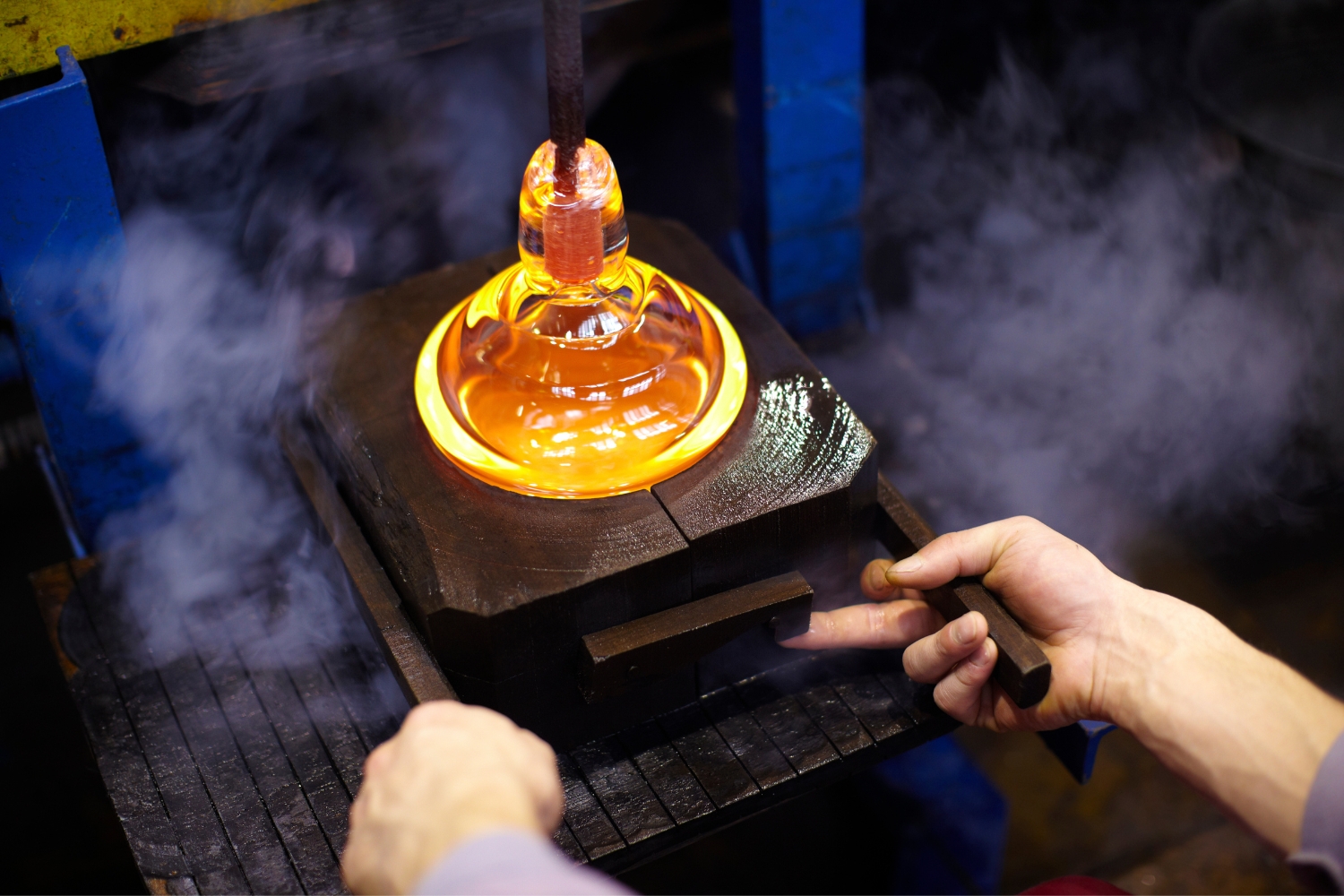
35) Czech Marionettes: The Magic of Puppetry
Puppetry holds a special place in Czech culture, with a tradition that spans centuries and encompasses both folk art and sophisticated theatrical performances. Czech marionettes are particularly renowned, known for their detailed craftsmanship and as embodiments of the nation’s storytelling tradition.
In Prague, numerous shops and workshops specialize in traditional Czech marionettes, ranging from historical figures to fantastical creatures. These marionettes are not just toys; they are pieces of art that carry the essence of Czech cultural heritage, captivating both children and adults with their charm and intricacy.

36) Alfons Mucha: Master of Art Nouveau
Mucha’s contributions to the art world are commemorated in Prague at the Mucha Museum, dedicated to his life and work. This museum houses an extensive collection of his works, including paintings, photographs, charcoal drawings, pastels, lithographs, and personal memorabilia. It offers visitors a comprehensive look into Mucha’s artistic journey, highlighting his profound influence on visual culture.
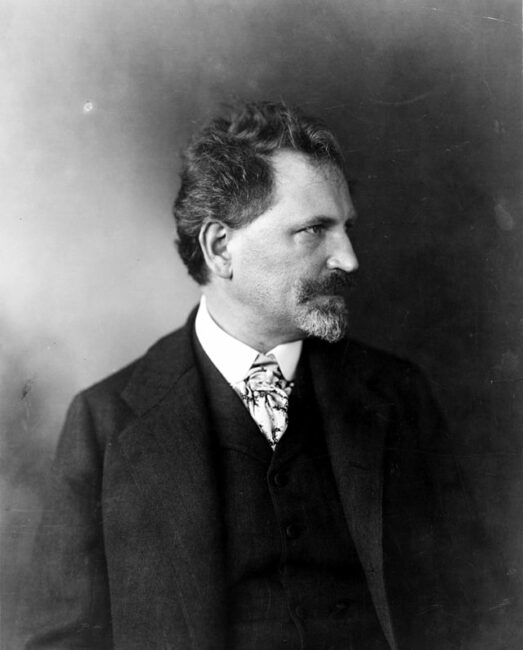
37) You can visit the beer spa in Prague
Czechs are crazy about beer, but did you know you can even visit a beer spa? Procedures often include unlimited consumption of beer but that’s not it! Typically, a beer spa treatment involves soaking in a tub filled with a warm mixture of mineral water, hops, malt, and yeast – the key ingredients in beer. A warm bath is said to open up pores, improve blood circulation, and soothe muscles.

38) Prague Zoo: A Conservation Beacon
Prague Zoo is not just a place to see animals; it’s a globally recognized conservation center, ranked among the world’s best zoos. Home to many rare and endangered species, the zoo plays a crucial role in global efforts to protect and preserve wildlife. Its commitment to conservation, education, and research makes it a must-visit for nature lovers and families alike.
Situated in the beautiful Trója district the zoo offers the chance to explore diverse habitats and encounter animals from all around the world. Its well-designed enclosures and expansive grounds provide a naturalistic environment for the animals and an enjoyable experience for visitors.

39) The Velvet Revolution: The Path to Freedom
The Velvet Revolution marks a pivotal moment in Czech history—the non-violent transition of power from a Communist government to a democratic system in 1989. This period of civil unrest and political change is commemorated at significant sites throughout Prague, where citizens gathered to demand freedom and democracy.
The events of the Velvet Revolution have left a lasting legacy on Prague and the Czech Republic, symbolizing the power of peaceful protest and the resilience of the human spirit. Sites associated with the revolution, including Wenceslas Square and Národní Street, are not only historical landmarks but also places of inspiration and reflection.
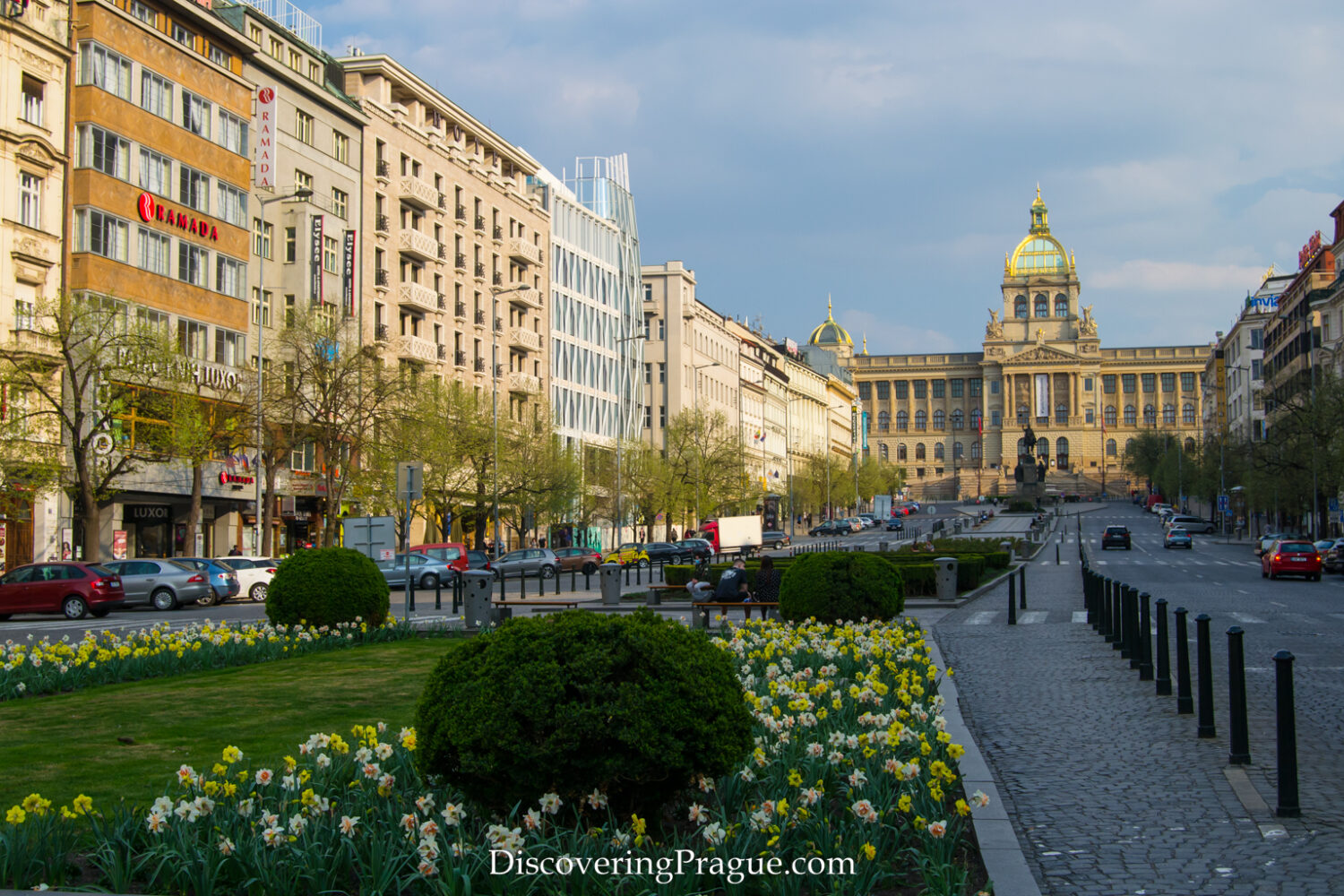
40) Powder Tower: A Gothic Gateway
As one of the original 13 city gates, the Powder Tower—locally known as Prašná brána—marks the boundary between Old Town and New Town. This Gothic tower, originally built in the 15th century, gained its name from its later use as a gunpowder storage facility. Today, it serves as a striking architectural landmark where you can climb up for a panoramic view of Prague’s ever-blending old and new landscapes.

41) Czech Crystal
Czech crystal is renowned worldwide for its quality, beauty, and intricate craftsmanship. The tradition of glassmaking in the Czech Republic dates back centuries, and Czech crystal has become synonymous with excellence in the art of glassmaking. From elaborate chandeliers to delicate glassware, Czech crystal pieces are sought after for their artistic value and craftsmanship.
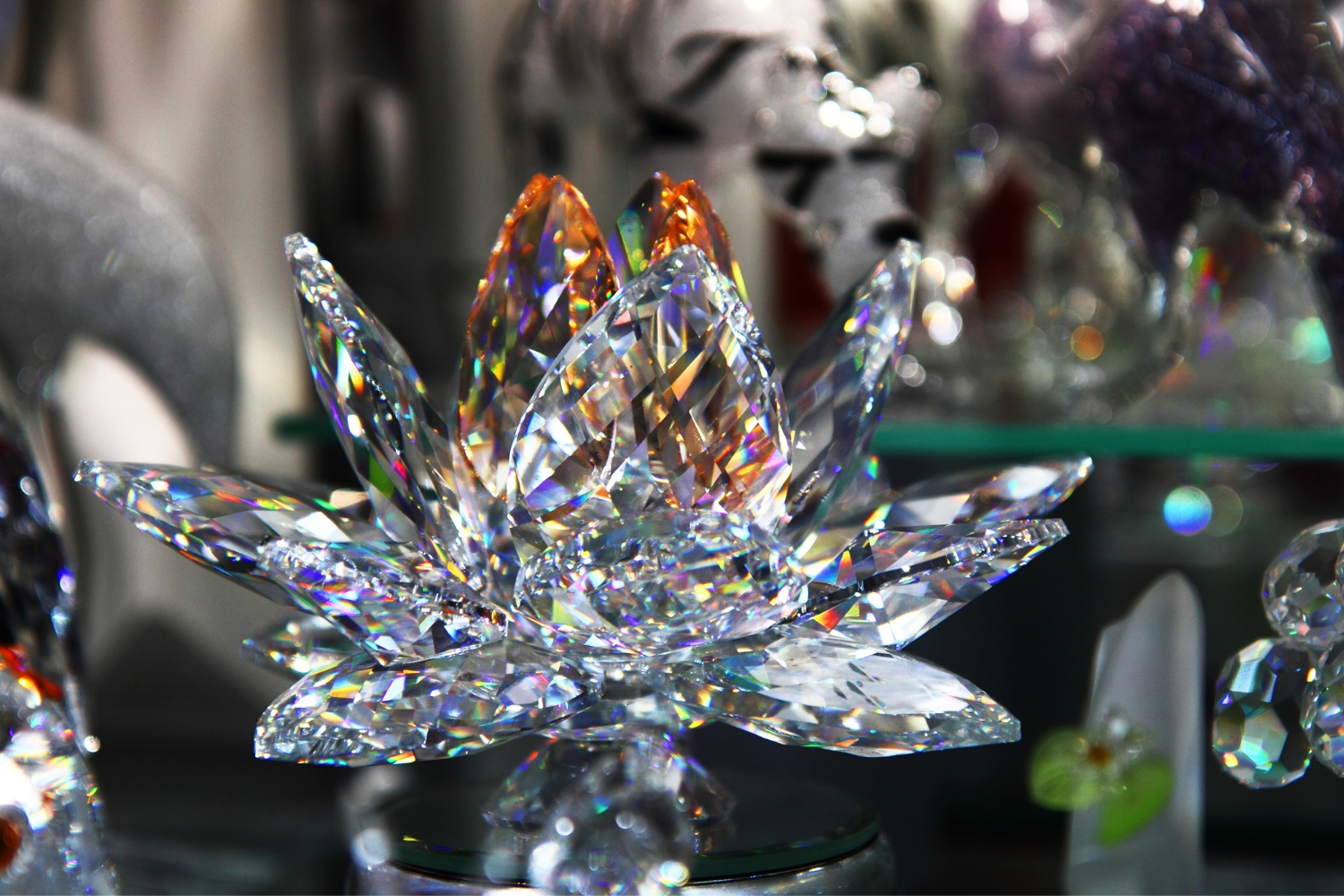
42) The Church of Our Lady before Týn
The Church of Our Lady before Týn, with its imposing Gothic spires, is one of the most recognizable features of the Old Town Square. Dominating the skyline, the church’s dark, brooding appearance and intricate facades draw visitors from around the world, making it a central figure in Prague’s historic landscape.
Inside, visitors can admire the lavish Gothic and Baroque interior, including the tomb of Tycho Brahe, the renowned astronomer, further solidifying the church’s place in both Prague’s history and its present.
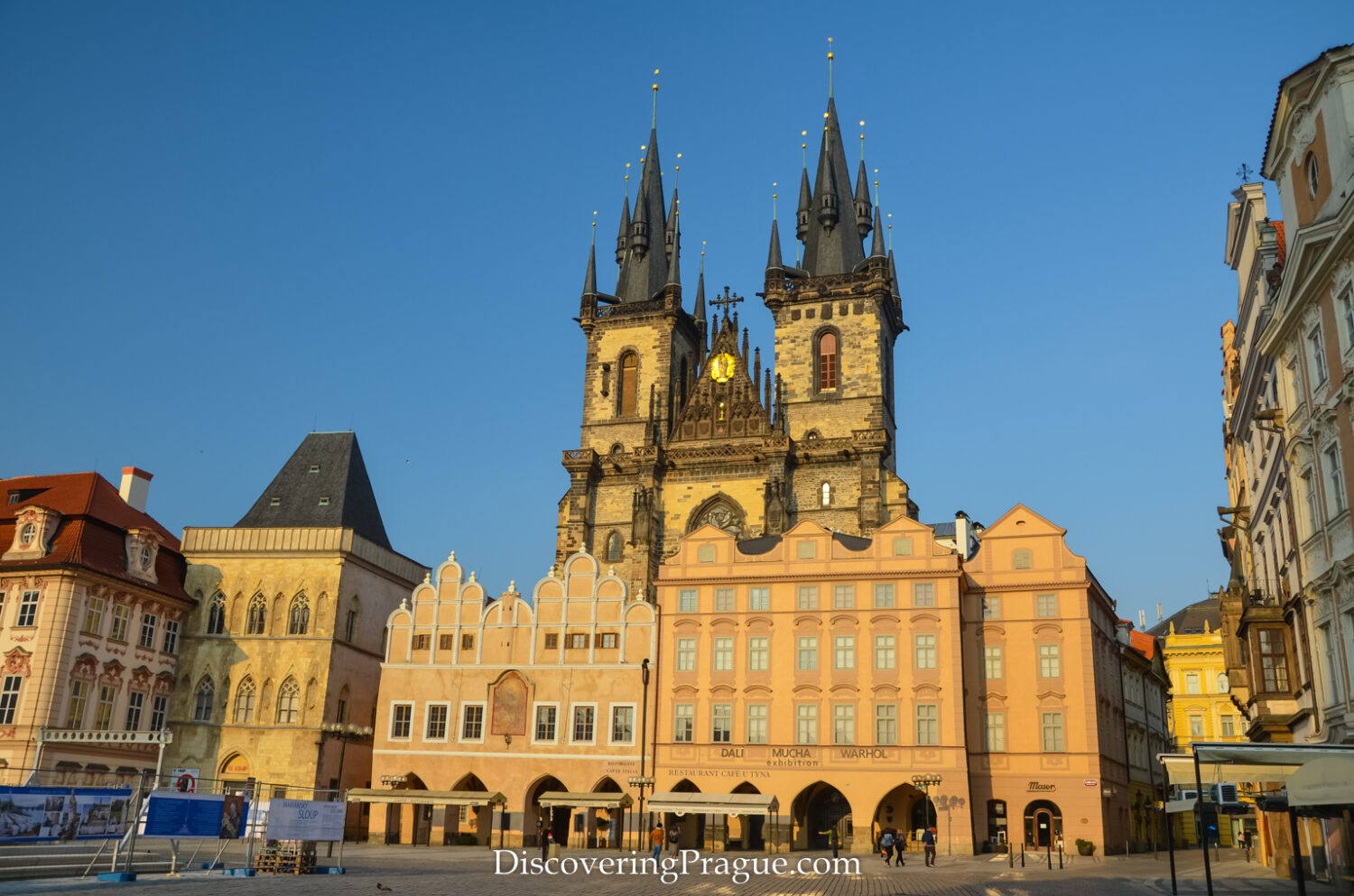
43) Rudolfinum
The Rudolfinum is not only an architectural masterpiece but also a cultural institution in Prague. Serving as the home of the Czech Philharmonic Orchestra, its stunning Neo-Renaissance design and excellent acoustics make it one of the premier venues for classical music in the world.
Apart from its musical significance, the Rudolfinum also hosts art exhibitions and cultural events, making it a versatile space that celebrates both auditory and visual arts. Its grand halls and elegant decor contribute to an atmosphere of sophistication and cultural enrichment that resonates with both locals and visitors alike.

44) Klementinum
The Klementinum is renowned for its Baroque library, often cited as one of the most beautiful libraries in the world. The library hall, with its ornate woodwork, fresco-adorned ceilings, and historical globes, transports visitors back in time. Housing over 20,000 volumes, the library stands as a testament to the rich intellectual history of the Jesuit order and the Czech Republic.
Beyond the library, the Klementinum is home to the Astronomical Tower, which offers panoramic views of Prague. The complex also includes the stunning Mirror Chapel, a masterpiece of Baroque art with intricate stucco decorations, mirrors that amplify the chapel’s spatial perception, and an organ once played by Mozart himself.

Pin What is Prague known for on Pinterest:
